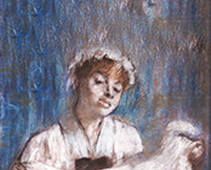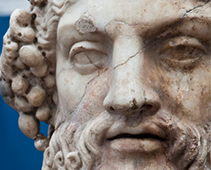Background
Since the emergence of the very earliest states in the Middle East, resources were the precondition of power. Food and raw materials were transported over long distances both by land and water – anywhere between Afghanistan and Spain. In a world without frontiers trade and migration became important factors in how society was structured. Commodities, knowledge and ideologies were exchanged over long distances. The centres of power shifted and new empires arose, but belief in divine direction was common to all cultures.
WHO WERE THE ETRUSCANS?
WHO WERE THE ETRUSCANS AND WHAT BECAME OF THEM?
The landscape between the Arno and Tiber rivers, modern Tuscany, was, from roughly 900 to 400 BC, the Etruscan heartland. Fertile plains and lush pastures, mountains rich in minerals and anchorages facing the Mediterranean created favourable conditions for trade.
Exchange of commodities and know-how with merchants from the Middle East and Greece brought exotic products and new customs to Etruscan society. The traditional herding and peasant culture gradually changed. Towns arose, huts became palaces, and chieftains became princes. Trade agreements and marriage between rich foreign merchants and the daughters of the Etruscan elite created a new aristocracy. Through the exchange of gifts and the production of works commissioned from itinerant craftsmen there emerged an Etruscan culture featuring elements from both the Middle East and Greece.
The Etruscans learned the alphabet, abc… from foreigners. For this reason it is possible for us to read the few surviving inscriptions, though apart from proper names and titles we know little of their language
THE ETRUSCANS BECOME ROMANS
Some time after 400 BC the territory of the Etruscans was gradually absorbed by their neighbour to the south, the expanding Roman Empire. Latin, the Roman language, spread throughout the entire Italian peninsula. The language of the Etruscans died out, but many traditions lived on in Roman culture. This was particularly the case with the religious ceremonies, which were a part of the ancestor cult, rituals in the worship of the gods, and, not least, the interpretation of omens.




